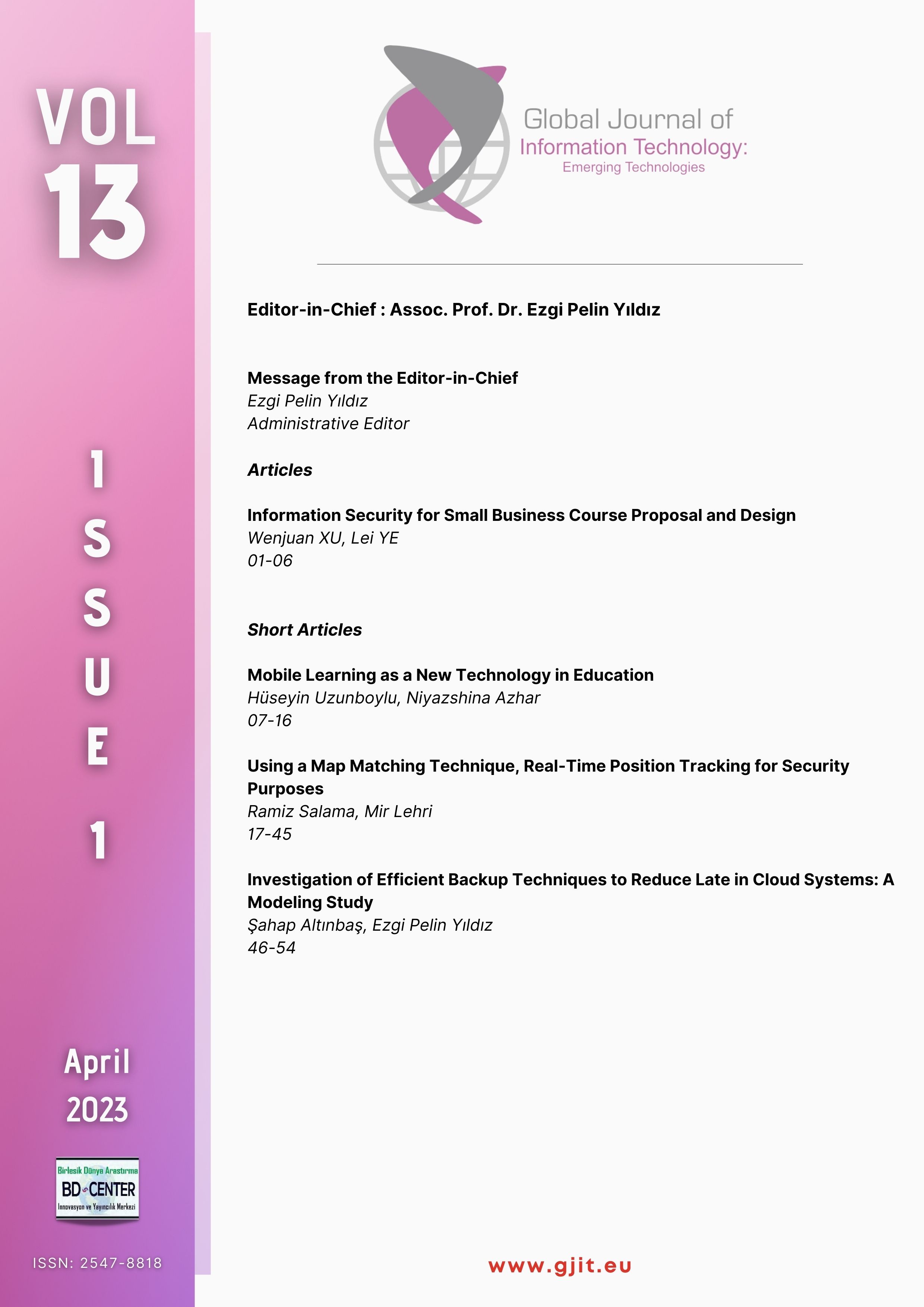Investigation of Efficient Backup Tecniques to Reduce Late in Cloud Systems: A Modeling Study
Main Article Content
Abstract
From the formation stages of the information society to the present day, new developments have been experienced in many areas such as data formation, processing, storage and sharing of data in electronic environments. In this context, many new technological concepts have been included in our lives. When it comes to data storage environments, the concept of "Cloud Computing", which has been developing and increasing in popularity in recent years, comes to our minds. Cloud computing, with its known definition, is an internet-based technology service that provides access to the data stored on its servers at any time through internet access and allows users to benefit from the services offered by the system to the extent they want. While the advantages of cloud computing systems such as low cost, high performance, not requiring physical materials and being flexible can be mentioned, it is also emphasized that it brings many problems in terms of system. The most important of these problems; the lack of resources in cloud computing service providers, causing unpredictable delays in server response times. Based on all this information, this research is structured on the development of solution processes on these delays. In this sense, it is possible to consider three areas of cloud infrastructure; cloud computing, distributed storage and streaming communications. One of the first solutions that comes to mind is duplicating a task on multiple machines and waiting for the earliest copy to finish can reduce service latency; but intuitively, it costs additional computing resources and increases the queue load on servers. In this context, the effect of redundancy on the tail will be analyzed in the first part of the research. As a solution proposal, in this section, it will be discussed that service delays and queue load can be reduced by using the replication method, thus making the system more efficient. In a similar way, by requesting more than one copy of a file and waiting for any of them to arrive, the cloud storage requests will be accelerated for content download. In the second part of the research, generalization will be made from replication to coding and the (n, k) fork-join model will be studied to analyze the delay in accessing a storage system with (n, k) deletion code. This analysis will provide practical information that several users can access a content at the same time and provide faster service to the relevant users. Achieving low latency in streaming communication is even more difficult, as packets must be transmitted quickly and sequentially. Based on this structure, in the third part of the research, it is aimed to develop deletion codes to transmit redundant packet combinations and ensure smooth playback. Experimental modeling method was used as a research method in the study. In general, the aim of the research is to blend various mathematical tools from queuing, theory coding and renewal processes. It is foreseen that the techniques and insights to be developed with these dimensions of the research can be applied to other systems with stochastically changing components, and integrated studies can be made and contribute to the literature in this context.
Downloads
Article Details

This work is licensed under a Creative Commons Attribution-NonCommercial-NoDerivatives 4.0 International License.
Authors who publish with this journal agree to the following terms:- Authors retain copyright and grant the journal right of first publication with the work simultaneously licensed under a Creative Commons Attribution License that allows others to share the work with an acknowledgement of the work's authorship and initial publication in this journal.
- Authors are able to enter into separate, additional contractual arrangements for the non-exclusive distribution of the journal's published version of the work (e.g., post it to an institutional repository or publish it in a book), with an acknowledgement of its initial publication in this journal.
- Authors are permitted and encouraged to post their work online (e.g., in institutional repositories or on their website) prior to and during the submission process, as it can lead to productive exchanges, as well as earlier and greater citation of published work (See The Effect of Open Access).
